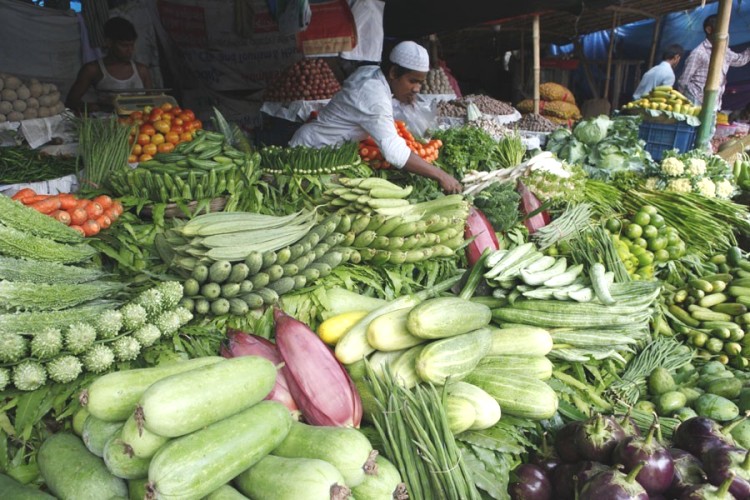
Nine lakh tonnes of vegetables expected in Rajshahi
BSS
Published:25 Apr 2021, 12:01 PM

Nine lakh tonnes of vegetables expected in Rajshahi
The Department of Agriculture Extension (DAE) has set a target to produce around 9.15 lakh tonnes of summer vegetables from 49,895 hectares of land in all eight districts under the division during the current Kharif-1 season.
Sirajul Islam, additional director of the DAE, said Rajshahi division has been thought to be the country’s most prospective vegetable producing region.
Meanwhile, the entire kitchen markets in the region are currently bustling with all summer vegetables like red amaranth, bottle gourd, spinach, lady’s finger, pointed gourd, bitter gourd, pumpkin and brinjal benefiting both growers and consumers.
Vegetable farming brings a smile on farmers’ faces here as they are becoming financially solvent by cultivating various types of vegetables, meeting its growing demand of the consumers despite the Covid-19 pandemic.
Officials said farmers are cultivating vegetables on bare lands and homesteads along with farm land, increasing its production which is changing the economic condition of local farmers.
At present, even many of the winter vegetables are being cultivated in the summer season. The farmers are seen showing their interests towards vegetable farming as they have been gaining more profit over the last couple of years.
Farmers are passing busy days with vegetable farming in the current Kharif-1 season and they are happy of their good yields with less irrigation water following a couple of rains experienced.
Varieties of vegetables are available in the local markets round the years because of regular farming of the crops along with other seasonal fruits and crops.
The growers are now busy with vegetable farming side by side with paddy and jute despite the rainless condition for the last couple of months.
As a result, the irrigation-dependent lady’s finger, corolla, potol, brinjal, chilly, cucumber and bottle gourd were cultivated without any irrigation.
Mozammel Haque, 37, farmer of Palpur village under Godagari upazila, said he earned Taka 20,000 by selling red amaranth from one bigha of land after sowing its seed hardly 20 days back at a cost of Taka 12,000.
“We are very much happy over the vegetable farming because we get good yield with fair market price within a short time,” he told BSS.
Abdul Bari, 42, another farmer of Mollapara area, said not only red amaranth but also many other short duration vegetables are being produced here.
Farmers in the vast Barind tract are growing brinjal by covering the soil with polythene sheets with a view to saving the plants from being damaged by rain water.
Brinjal is generally a winter vegetable but the growers here are farming the item in summer.
On behalf of the ‘Integrated Water Resource Management (IWRM)’ project, more than 12.58 lakh community people of 2.66 lakh households are being motivated and encouraged towards vegetable farming to reduce the pressure on underground water.
The project is being implemented in around 1,280 drought-hit villages in 39 Union Parishads (Ups) and three municipalities of eight upazilas in Rajshahi, Naogaon and Chapainawabganj districts since 2014, said Jahangir Alam Khan, coordinator of the project.
“Farmers get benefit by farming vegetables in the region. It brings a smile on marginal farmers and poor people’s faces,” said Dr Shakhawat Hossain, senior scientific officer of On Farm Research Division, an organ of Bangladesh Agriculture Research Institute.
Gardening around homesteads in the summer season has been gaining popularity with production of different fruits and vegetables. Marginal farmers and the poor people are mostly engaged in this venture by making the best use of spaces around their homes.
On the other hand, the farmers had produced more than 19.70 lakh tonnes of vegetables from 92,132 hectares in the recent past winter season benefiting the consumers in many ways like meeting up their protein demands in Rajshahi division.
Another 16.57 lakh tonnes of potatoes were produced from about 76,661 hectares of land in the division making the farmers happy due to its good yield and cherished market price amid the COVID-19 pandemic.